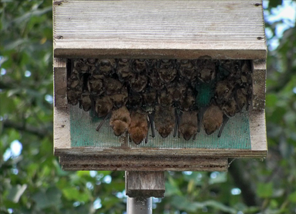There are different ways to remove bats from your home without killing them. In fact, bats are a protected species in Pennsylvania, which means that it is illegal to kill them!
The first thing you should do is to take steps to avoid bats from entering your home. Locate the cracks or holes that the bats could use to enter your attic or other areas of the house. Around dusk, go outside and watch to see if any bats are leaving your house from a particular area. Once the bats are out of your home, seal up any cracks, entrances, and other openings with caulk or another sealant. In addition, the best way to rid the bats from your home is to provide alternate roosts for them. For example, you can build a bat house. This solution benefits the bats and the homeowners.
The first thing you should do is to take steps to avoid bats from entering your home. Locate the cracks or holes that the bats could use to enter your attic or other areas of the house. Around dusk, go outside and watch to see if any bats are leaving your house from a particular area. Once the bats are out of your home, seal up any cracks, entrances, and other openings with caulk or another sealant. In addition, the best way to rid the bats from your home is to provide alternate roosts for them. For example, you can build a bat house. This solution benefits the bats and the homeowners.
Tips for Building a Bat House
- Build the house at least 10-15 feet above ground.
- Make sure the bat house entrance is free from obstructions, such as branches.
- Attach the house to a pole, tree, or side of a building.
- Pick a location that receives at least 7 hours of sunlight per day to maintain sufficient temperatures in the house.
- Face the house southeast or southwest so it can absorb the morning sun and enough sunlight throughout the day.
- Paint or stain the house using a dark color so the house absorbs and retains heat.
- Use inner wood that is somewhat roughed or screening so the bats' claws can grip to the sides when they are in the house.
All information is credited to PPL Wallenpaupack Environmental Learning Center
Location |
|
